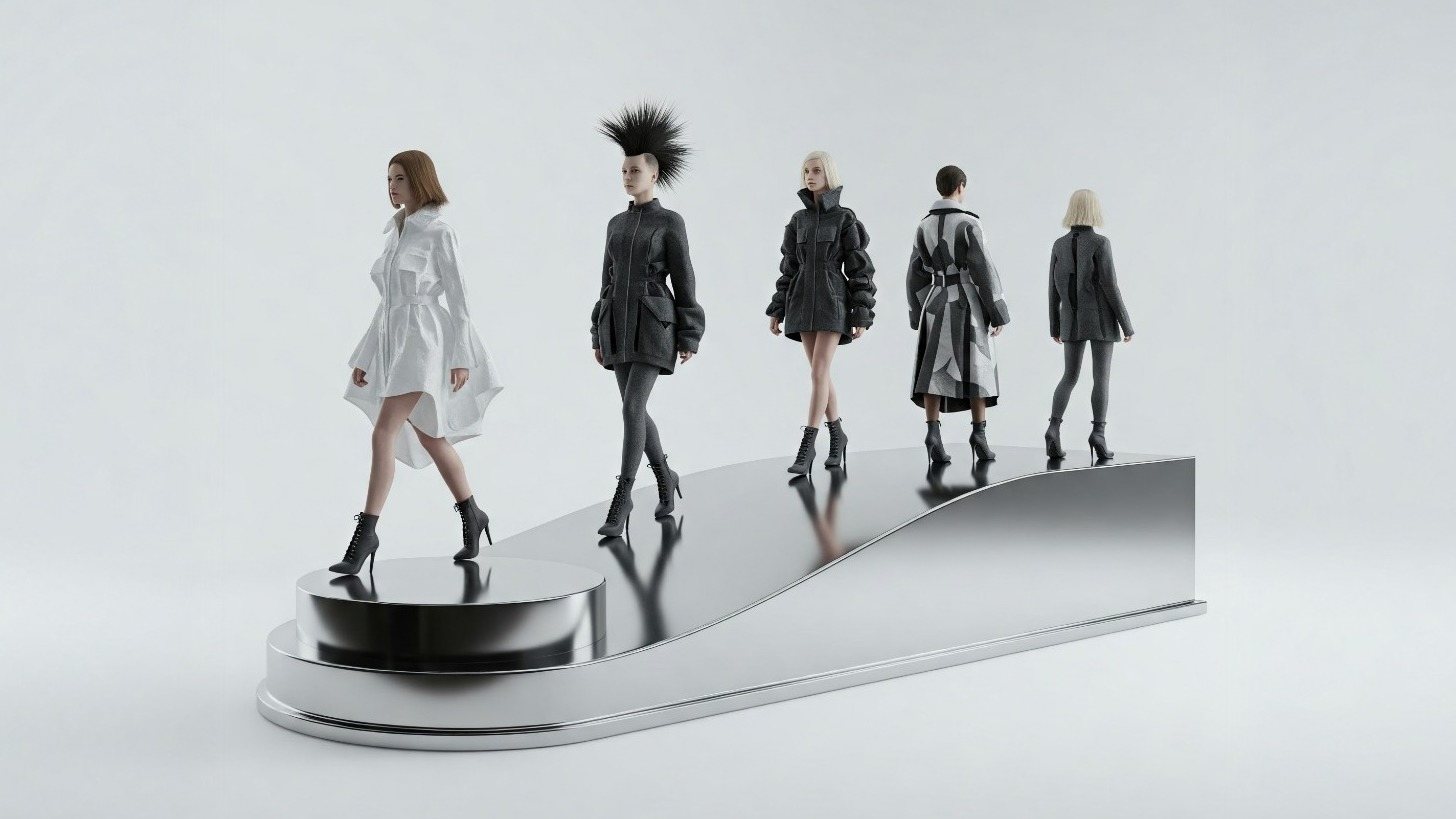
Imagine stepping into a fashion show where the runway feels like an art gallery. Models glide past in sculptural garments that defy gravity. Models showcase dresses woven from recycled plastics, jackets with pulsing LED lights, or gowns painted with abstract patterns. These are not just clothes; they are bold statements. They blend creativity and imagination. This is the world of conceptual fashion. It’s a movement where clothing transcends its practical purpose to become a canvas for ideas.
At its core, conceptual fashion’s meaning lies in prioritizing creativity, symbolism, and storytelling. Designers in this space create pieces that provoke thought, challenge norms, or reflect deep emotions.
Traditional fashion focuses on wearability and trends. However, conceptual art fashion blurs the line between wearable design and fine art. A dress might symbolize climate change or explore cultural heritage. It can turn the wearer into a walking exhibition. This fusion of high fashion concepts with artistic expression has redefined runways. It makes them platforms for intellectual and emotional dialogue.
What Makes Fashion Conceptual? It’s More Than Just Clothes
What is conceptual fashion? It’s an ideas-first approach where designers focus on narrative over practicality. The meaning of conceptual fashion goes beyond aesthetics. It’s about crafting pieces that carry cultural, political, or philosophical weight. For example, a collection might explore themes like gender fluidity, colonialism, or consumerism. They can use fabrics, shapes, and textures to tell the story. Unlike contemporary fashion style, which often follows seasonal trends and polished looks, conceptual fashion dares to be unconventional, even unsettling, to spark conversation.
For example, a designer might create a coat covered in shattered mirrors to reflect society’s obsession with perfection. Or a dress made of biodegradable materials to comment on sustainability. These pieces aren’t just clothes – they’re statements.
Themes like identity, politics, and social commentary are common. They make conceptual fashion a powerful medium for expression. Contemporary style fashion might focus on sleek silhouettes or bold colors. However, conceptual fashion asks, “What does this piece mean?”
The Designers Turning Runways Into Art Galleries
The rise of conceptual fashion designers has changed fashion into a global stage for intellectual and emotional exploration. Pioneers like Rei Kawakubo of Comme des Garçons, Iris van Herpen, and Hussein Chalayan have redefined what clothing can be:
- Kawakubo’s avant-garde designs are often oversized or asymmetrical, challenging conventional beauty standards.
- Van Herpen uses 3D printing and laser-cutting to create otherworldly garments that feel like wearable sculptures.
- Chalayan is known for his innovative conceptual fashion designs. He once designed a dress that mechanically transformed on the runway. The transformation symbolizes the passage of time.
These designers don’t just create clothes; they craft experiences. Their work, rooted in high fashion concepts, invites viewers to question societal norms or feel deep emotions. For instance, Chalayan’s collections often explore displacement and cultural identity. This exploration reflects his own Turkish-Cypriot heritage. Van Herpen’s designs are inspired by nature and technology. They push the boundaries of what fabric can do. By treating runways as art galleries, these visionaries have elevated fashion to a medium that provokes, inspires, and challenges.
Why Consumers Are Drawn to Meaning-Driven Fashion
The appeal of conceptual fashion lies in its ability to connect with a more conscious, expressive audience. Today’s consumers crave more than just beautiful clothes. They want pieces that tell stories, reflect values, or start conversations, whether it’s sustainability, individuality, or rebellion.
Conceptual fashion allows people to wear their beliefs. This shift aligns with the rise of contemporary style fashion. In this context, personal expression and cultural relevance matter as much as aesthetics.
For example, younger generations are drawn to brands that champion ethical production or challenge societal norms. A conceptual piece – like a jacket embroidered with protest slogans or a dress made from upcycled materials – resonates because it reflects their values. This connection drives demand for high fashion concepts that feel authentic and meaningful. Consumers also see fashion as a way to express cultural identity. This might be expressed through bold prints inspired by heritage or avant-garde designs that defy mainstream trends. As a result, conceptual fashion is a movement for those who want their wardrobe to say something.
Here’s why consumers love meaning-driven contemporary fashion styles:
- Storytelling. Pieces that carry a narrative feel personal and unique.
- Values. Designs reflecting sustainability or social justice align with ethical priorities.
- Individuality. Conceptual fashion celebrates bold, unconventional self-expression.
- Cultural Connection. Garments inspired by heritage or history foster pride and identity.
From Concept to Closet: Can Conceptual Fashion Be Wearable?

But a question arises: Can conceptual fashion design be practical for everyday life? The avant-garde creations on runways often seem far from wearable. However, designers find ways to balance bold ideas with functionality.
For instance, exaggerated silhouettes, a hallmark of conceptual design, have inspired oversized blazers and dramatic sleeves in contemporary style fashion collections.
Symbolism, like embroidered motifs or unconventional fabrics, appears in streetwear and high-street brands. Brands like COS or & Other Stories adapt high fashion concepts. They turn them into minimalist, wearable collections. These brands use clean lines and subtle textures to echo conceptual aesthetics. Even fast-fashion retailers borrow elements like asymmetrical cuts or metallic finishes. This trend proves that conceptual fashion can influence everyday wardrobes.
Here are ways conceptual fashion becomes wearable:
- Simplified Silhouettes. Avant-garde shapes are toned down for daily wear.
- Symbolic Details. Embroidery or prints carry meaning without overwhelming the design.
- Innovative Materials. Sustainable or textured fabrics add an artistic touch.
- Statement Accessories. Bold jewelry or bags bring conceptual flair to simple outfits.
The challenge lies in maintaining the essence of conceptual design while ensuring practicality. Designers like Issey Miyake have mastered this. Miyake created pleated garments that are both sculptural and functional. Similarly, brands like A-COLD-WALL blend conceptual ideas with streetwear. This approach makes conceptual fashion design accessible to a wider audience. By bridging the gap between runway and reality, these designers ensure that conceptual fashion isn’t just for galleries – it’s for closets, too.
In conclusion, conceptual fashion is more than a trend. It’s a movement that redefines clothing as a form of art and expression. Conceptual design invites us to wear our stories, values, and identities. The line between art and fashion continues to blur, yet one thing is clear. Conceptual fashion is here to stay. It inspires us to see clothing as more than just fabric – it’s a canvas for creativity.

